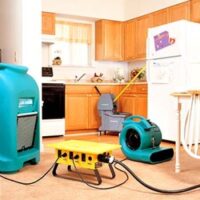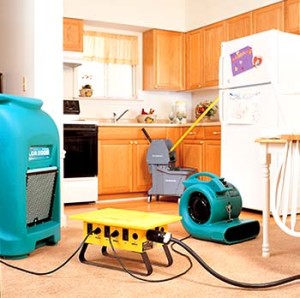Water Damage Restoration Training – The Basics

 After a wet disaster, such as snow destruction, flood or burst pipes, a team of professional cleaners hat to clean up the mess, dry and repair the substructures which will be affected by the high volumes of moisture, such as metal, concrete, wood, drywall and plaster. Besides the mold, there are many other issues associated with the moisture damage, crumbling plaster and drywall, weakening supports and beams, rusting metal objects and surfaces etc. In case you left the moisture to sit long enough, chances are, it will ruin the whole house. For that reason, a cleaning team should have professional water damage restoration training; this enables the crew to properly assess the situation and think of the best repair strategy.
After a wet disaster, such as snow destruction, flood or burst pipes, a team of professional cleaners hat to clean up the mess, dry and repair the substructures which will be affected by the high volumes of moisture, such as metal, concrete, wood, drywall and plaster. Besides the mold, there are many other issues associated with the moisture damage, crumbling plaster and drywall, weakening supports and beams, rusting metal objects and surfaces etc. In case you left the moisture to sit long enough, chances are, it will ruin the whole house. For that reason, a cleaning team should have professional water damage restoration training; this enables the crew to properly assess the situation and think of the best repair strategy.
The Institute od Inspection Cleaning and Restoration Certification (IICRC) sets the standards for water damage restoration training and cleaning industry. According to them, there are different classes and levels involved in the wet disaster. Depending on the type of liquid involved, there are three categories of liquid destruction:
- Liquid from a sanitary, clean source. For example, from drinking fountains, toilet tanks, faucets. Category 1 can soon become a category 2.
- Liquid that used to be called grey water; it has a level of contaminates that, if ingested, can cause discomfort or illness. Sources include washing machine or dishwasher overflows, toilet overflow (if no feces is included) and flush from sink drains.
- Liquid is grossly dirty and unsanitary. If ingested, this liquid category can cause severe disease or even death. Category 3 used to be called black water and its sources are sewer backup, stagnant liquid with bacterial growth, toilet overflow (with feces), flooding from streams and rivers.
When it comes to the liquid destruction classes, according to the IICRC standards there are four of them
- The easiest to deal with and the lowest, class one has a slow evaporation rate. This means only part of an area or room was affected, there is no (or just a little) wet rug/carpet/furniture and the moisture has affected materials such as concrete or plywood and others with a low permeance rate.
- An evaporation rate is high, the level has affected an entire area or room, cushioning and/or carpeting, the walls became wet (more than 12”) and some moisture has remained in structural materials.
- The evaporation rate is the fastest; the walls, ceilings, insulation, sub floors and carpeting are all saturated. There’s a possibility the liquid has come from overhead.
- This is a specialty drying situation, meaning there was enough time and liquid to saturate materials such as stone, brick or hardwood.
After finishing the water damage restoration training, a technician is able to tell the difference between these liquid categories and classes and to make a good restoration plan based on above-mentioned factors. If a cleaning team is armed with the proper tools and the training( such as water damage Allen Park, Michigan) most situations become salvageable. Only in the U.S. the need for replacing and repairing portions of a business or home due to natural disasters and accidents brings in over $ 10 billions annually. No matter if it’s the result of human error, earthquake, tornado, bursting pipes, the correct cleaning plan can return the space back to its original condition or even better! Water damage restoration training can, indeed, provide you the knowledge and experience to ensure a high level of employee and client satisfaction.
